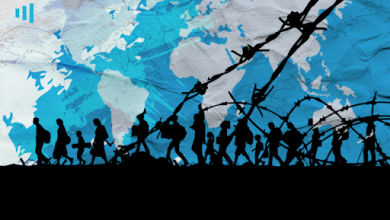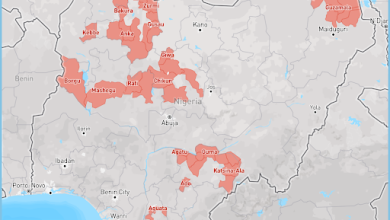Food Security Declines In The Height Of Insecurity In Cameroon
The level of insecurity in Cameroon has increased, sustaining food insecurity and further deteriorating the already dire humanitarian situation in the country.

In more recent years, the humanitarian situation in Cameroon continues to grow dire, especially with the impact of COVID-19 in 2020, which led to the closure of businesses.
There has been a persistent rise in the level of insecurity in the Northwest and Southwest regions, with ongoing invasions of armed groups in the Far North, conflicts over natural resources like water and pastures, and floods in the Far North, North, and Western regions. These actions continue to have a severe impact on food security.
Recent findings by the Cadre Harmonisé in October 2023 show that 2,940,807 people, constituting 10.6 per cent of Cameroon’s population, are facing acute food insecurity. The Mid-Year Update for the 2023 Global Report against Food Crises reveals that 2 per cent and 10 per cent of the population are, respectively, in phases 2 and 3 of acute food insecurity in 2023. This marks a substantial escalation compared to 2022, where only 11 per cent were in phase 2, and in 2021, the figure stood at 10 per cent.
Between June and August 2023, approximately 2.36 million people, resulting in 9 per cent of the analysed population, were anticipated to experience a crisis or worse situation, reaching phase 3 or higher in IPC/CH. Moreover, as of December 2023, the prevalence of adaptation strategies relying on food during a crisis or higher-than-crisis scenario in Cameroon stood at 36.96 per cent, while the prevalence of insufficient, poor, and borderline food consumption was at 40 per cent.
Clearly, insecurity and conflict are the main drivers of this food insecurity.
Adverse Effects And Adaptive Measures
Up to 117,738 refugees and people displaced by conflicts and floods are reported to be unable to produce food or access humanitarian food aid. It is also likely that 992,094 individuals continue to face a crisis situation (IPC phase 3). The implication is that many of these individuals are forced to steal crops, fostering distrust and escalating violence within communities.
In the Far North region, residents have resorted to borrowing and selling their remaining productive assets to cover essential non-consumable expenses like school fees or medical care.
In the Northwest and Southwest regions, there is a decline in household incomes, and the lack of opportunities for agricultural activities due to limited land access forces many households to jeopardise their autonomy.
In the East region, the food insecurity situation has been significantly impacted by the influx of refugees from Central Africa. Additionally, the reduction in WFP rations, as implemented in 2022, puts the population, especially women and children, in an extremely vulnerable situation, increasing their exposure to food insecurity and malnutrition and risking exacerbating conflicts in fragile localities where refugees and host communities share already limited resources and services.
In these dire conflict situations, where displacement and land access are heavily restricted, inter-communal tensions are escalating, and protection risks for women and children are significantly worsening, more families are compelled to adopt harmful adaptation mechanisms. Children are withdrawn from school, girls are forced into early marriage, men are coercively recruited, and women are at a higher risk of sexual violence.
Inflation Patterns
The National Institute of Statistics (INS) reported an increase in inflation from 6.3 per cent in August 2022 to 7.8 per cent in August 2023, which exceeds the 3 per cent threshold set by the Central African Economic and Monetary Community (CEMAC).
Although the government has made efforts to control the rate of inflation, like putting a ban on the exportation of cereal in December 2021, food prices haven’t relented. There is a significant increase of 13.3 per cent. Imported food items such as rice, wheat, and refined oil have also continued to rise, surpassing the previous year’s average and even the five-year average.
Recent data by the FEWS NET Cameroon Food Security Outlook (October 2023 – May 2024) reveal that in September 2023, sorghum and maize prices in markets like Maroua, Mora, Kaele, and Yagoua were over 50 per cent higher than the previous year, and nearly 70 per cent higher than the five-year average. Similarly, maize prices in Buea, Bamenda, and Kumba were 10 to 19 per cent higher than the previous year and significantly higher than the five-year average.
Support Our Journalism
There are millions of ordinary people affected by conflict in Africa whose stories are missing in the mainstream media. HumAngle is determined to tell those challenging and under-reported stories, hoping that the people impacted by these conflicts will find the safety and security they deserve.
To ensure that we continue to provide public service coverage, we have a small favour to ask you. We want you to be part of our journalistic endeavour by contributing a token to us.
Your donation will further promote a robust, free, and independent media.
Donate HereStay Closer To The Stories That Matter




